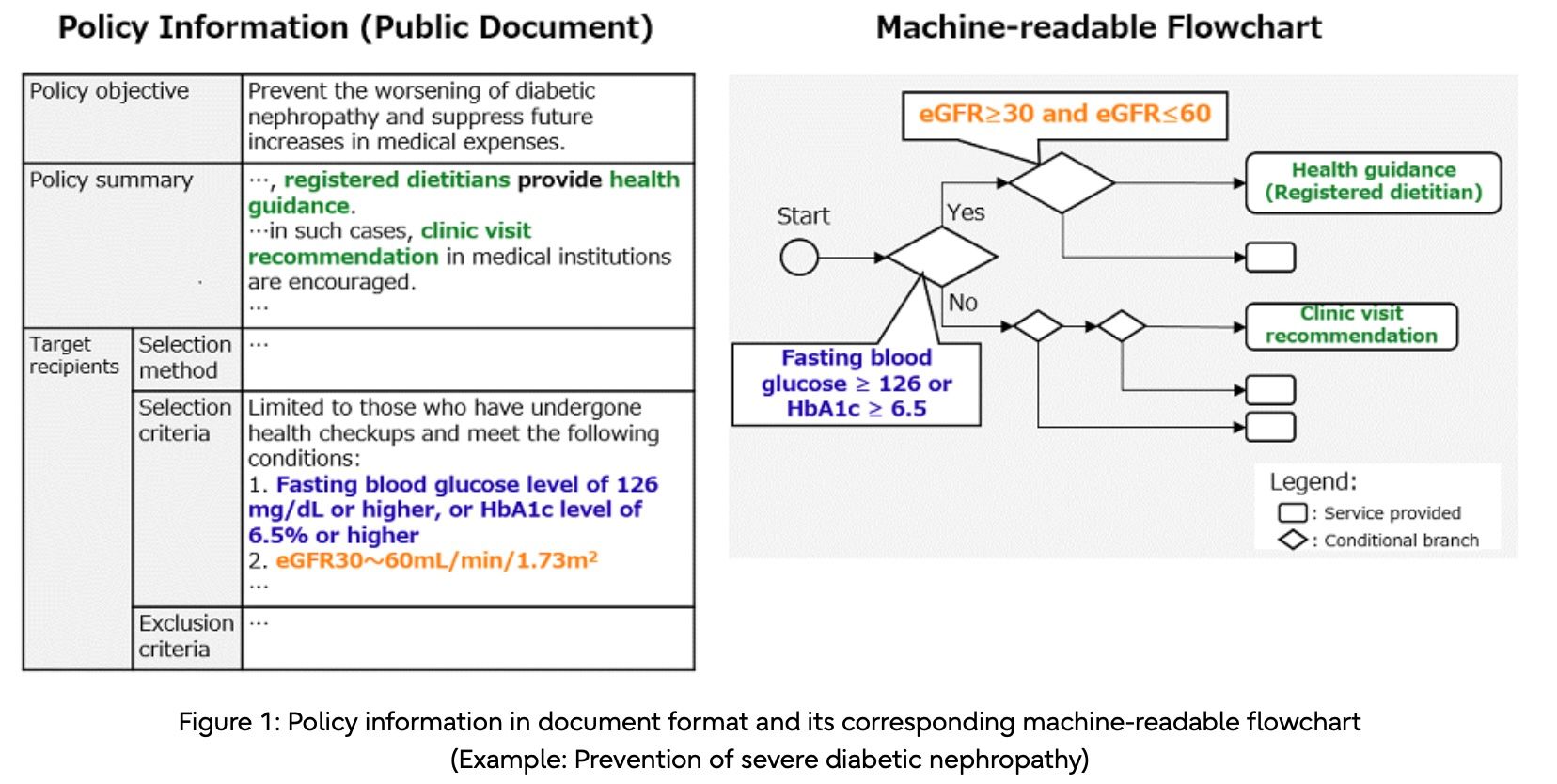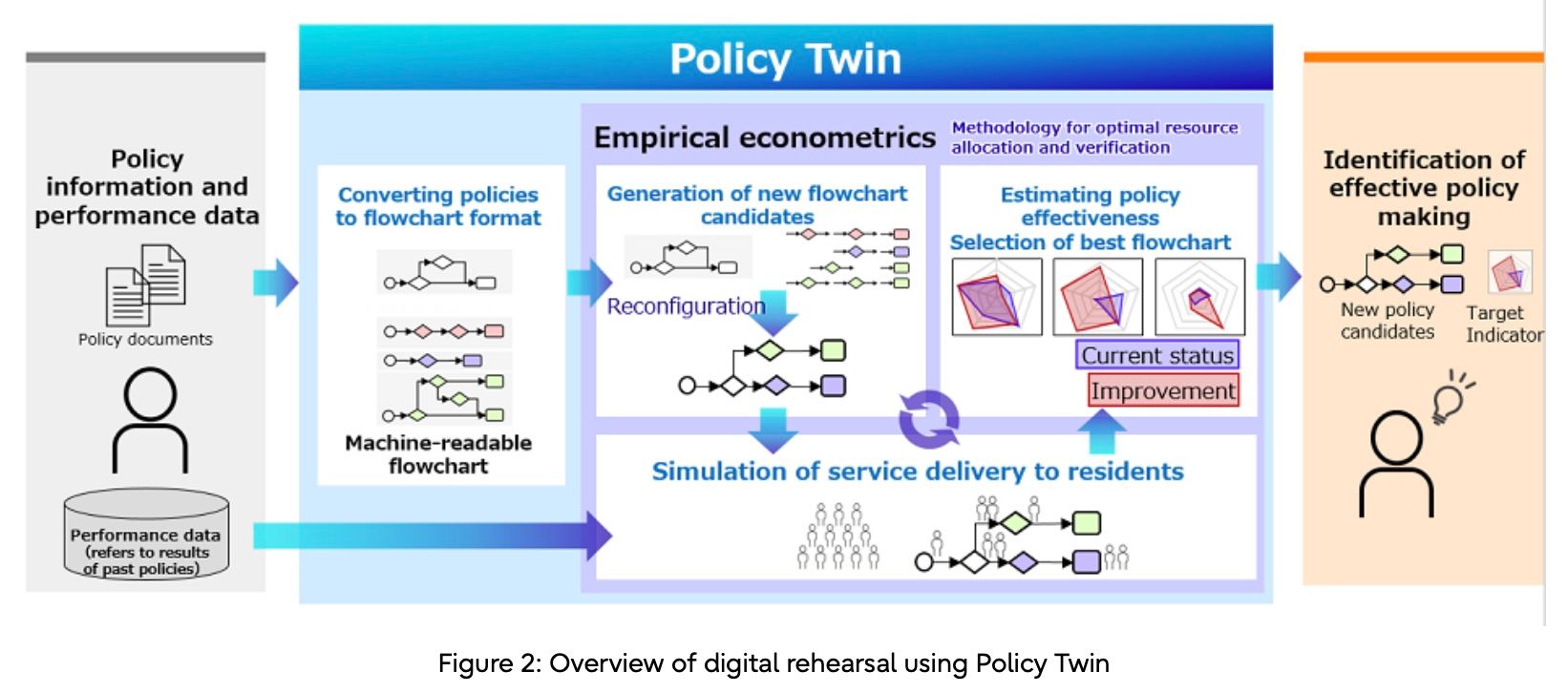KAWASAKI, Japan, Nov 26, 2024 - (JCN Newswire) - Fujitsu today announced that it has developed Policy Twin, a new digital twin technology to simulate the social impact of local government policies. Fujitsu will start offering Policy Twin to support effective and efficient service delivery in municipal preventive healthcare services on December 6, 2024 via the Fujitsu Research Portal (1), Fujitsu’s environment that offers users the opportunity to try out Fujitsu's advanced technologies.
Fujitsu’s newly developed technology recreates previously successful local government policies on a digital twin and uses data to generate new policy candidates and gauge effectiveness.
During field trials in preventive healthcare projects, the new technology enabled the creation of policy candidates that doubled both the medical expense cost-savings and the improvement of health indicators achieved through health guidance compared to the previous year, while meeting resourcing requirements. This demonstrated the technology’s ability to create policies that achieve multiple objectives simultaneously, potentially shortening planning times and facilitating consensus building.
Fujitsu aims to launch a service for the healthcare and medical sector in Japan utilizing the newly developed digital twin technology by fiscal year 2025. Furthermore, by leveraging this technology in its Uvance Wayfinders consulting services, Fujitsu aims to digitalize stakeholder initiatives and contribute to solving societal challenges, inlcuding service restructuring to address workforce shortages, disaster prevention and mitigation, and enhancing supply chain resilience.
Policy Twin Overview
Fujitsu has been developing Social Digital Twin (2), a group of technologies that incorporate the latest insights from behavioral economics into ICT, including AI, to support solutions for complex societal challenges. This involves developing digital rehearsal technology capable of accurately recreating human behavior on a digital twin and predicting the effect/impact of policies.Building on this digital rehearsal technology, Policy Twin leverages empirical economics, the science of using data to understand how to best allocate resources, to preemptively assess and compare the effectiveness of digitally recreated local government policies on a digital twin, enabling effectiveness maximization and comparative analysis.


The process of using Policy Twin to identify effective policies is as follows:
1) Convert written policies into flowchart format: Assisted by large language models (LLMs), publicly available municipal policy documents are converted into a machine-readable flowchart format (Figure 1). This format includes the services provided (health guidance, clinic visit recommendations, etc.) and uses conditional branches to narrow down the target recipients (i.e., conditions related to blood glucose levels or kidney disorders). This allows for comparison of the flow differences between policies of multiple similar municipalities, taking into account geographical characteristics and demographic composition.
2) Generate new policy flowchart candidates: As shown in Figure 2, new flowchart candidates are reconfigured by referencing the flowcharts of successful policies from multiple municipalities and combining parts of the conditional branches and services provided. During this process, the resource allocation examination process of empirical economics is referenced, and the combination of flowcharts is selected based on constraints such as the limited allocation range of resources (i.e., service usage capacity).
3) Simulate service provision: For each generated flowchart candidate, a simulation is run using techniques including machine learning that considers human behavioral choices (proprietary behavioral choice model) (3) and past data to determine which conditional branches people pass through and what services are ultimately provided. Furthermore, it calculates how target indicators, such as health indicators, medical costs, and resources, will change for the municipalities. When the accuracy of the simulation was verified for a preventive healthcare project in a certain municipality, it was confirmed that the number of health guidance cases calculated by the Policy Twin based on Japanese National Health Insurance data matched the actual values within a 5% margin of error. In this way, multiple indicators are simulated for each of the multiple flowchart candidates, and the flowchart candidate with the maximum indicators is selected.
Future Impact
Fujitsu anticipates that utilizing the Policy Twin for more effective preventive healthcare policy making allows municipalities to simultaneously achieve improvements in resident health, cost savings, and disease prevention, ultimately contributing to improved well-being. As the Policy Twin can also demonstrate the rationale behind the proposed policies, it can facilitate consensus-building among diverse stakeholders and support its implementation in society. Furthermore, employing this technology across multiple municipalities is expected to lead to best practice creation, mutual referencing of policies between municipalities, and application towards the standardization of policies.
(1) Fujitsu Research Portal :Portal site that has been open to the public since June 2023 to provide registered users access to trial versions of Fujitsu’s advanced technologies.
(2) Social Digital Twin :Group of technologies to digitally recreate not only the states of both people and objects, but also economic and social activities, based on real-world data. The Social Digital Twin aims to facilitate the understanding of the mechanisms that cause societal problems and solve increasingly complex and diverse issues.
(3) Behavioral choice model :The technology combines prospect theory, one of the leading theories in behavioral economics, and machine learning. It can express differences in choices among people while maintaining behavioral characteristics common to many people.
About Fujitsu
Fujitsu’s purpose is to make the world more sustainable by building trust in society through innovation. As the digital transformation partner of choice for customers in over 100 countries, our 124,000 employees work to resolve some of the greatest challenges facing humanity. Our range of services and solutions draw on five key technologies: Computing, Networks, AI, Data & Security, and Converging Technologies, which we bring together to deliver sustainability transformation. Fujitsu Limited (TSE:6702) reported consolidated revenues of 3.7 trillion yen (US$26 billion) for the fiscal year ended March 31, 2024 and remains the top digital services company in Japan by market share. Find out more: www.fujitsu.com.
Press Contacts
Fujitsu Limite
dPublic and Investor Relations Division
Inquiries